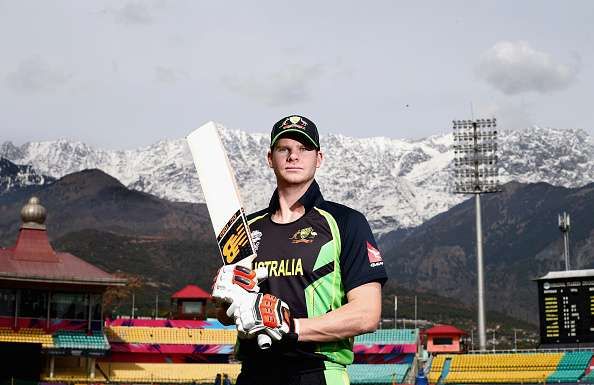
Has Steven Smith done enough to justify his place in the T20 team?
The transformation of Steven Smith, the cricketer, has been rapid and comprehensive. He made his international debut against Pakistan six years ago as a leg-spinner who could also muscle the ball to the boundary when required.
By the end of 2015, Smith had become the captain of the Test side, as well as one of the top run-getters in the world across all formats.
He got his big break in 2010, with a spot in the Test XI against Pakistan as a specialist spinner. His batting, more than his bowling, was what made more impact. He couldn’t capitalize in the Ashes that followed, as was shown the door. 2013 marked a return to the international arena and a change of trade. The wannabe Warne transformed into a complete batsman and kick-started a golden run which made him rise to the top.
Last year, he was one of the most consistent performers for Australia in all formats, throughout the triumphant World Cup campaign, and scored a beautiful 215 at Lords and a 199 against the West Indies. With the departure of Michael Clarke, he got a major role in the Australian set-up.
However, with the ICC World T20 in progress, it is interesting to see Smith’s record and analyze his role in the T20 team.
He averages less than 20 from 28 T20 matches, with a solitary fifty-plus score since 2010. He has taken 17 T20 wickets, and bowls at an economy of less than 8. He doesn’t have a single four-wicket haul to his name.
Since his evolution into a batting all-rounder, his bowling is becoming less frequently sighted. He has bowled just one over in T20s since August 2011, and by the looks of it, doesn’t seem to be planning to contribute with the ball. Apart from a 26-ball 44 against South Africa at Cape Town early this month, Smith’s batting hasn’t been impactful in the six T20s he has played this year.
This presents a cause of concern for Australia, as their premier batsman is failing to produce the consistency he is known for. He was handed over the T20 captaincy from Aaron Finch.
Other equally deserving contenders are snapping at his heels, especially those who have made a mark in the Big Bash.
With Smith in the team, Chris Lynn, who was in red-hot form throughout the Big Bash, doesn’t get a place in the side. Lynn scored 378 runs in this edition, with a strike rate of 173, including three fifties and one hundred. The top order is plush with options, Usman Khawaja partnering Shane Watson, and Warner being pushed down the order.
Aaron Finch, who was the captain of the T20 setup just a few months ago, doesn’t find a place in the team. Smith batted at the crucial No.3 position in Australia’s last game against Bangladesh, but couldn’t contribute much.
With Shane Watson’s decision to retire at the end of the tournament, it is highly unlikely that the think-tank will tinker with the top-order, and Khawaja and Watson are likely to continue. This puts added pressure on Smith to perform, as an “extremely disappointed” Finch is warming the benches, despite entering the tournament as the No.1 T20 batsman in the world.
Smith’s all-rounder angle is also diminished because he no longer bowls actively, and another specialist leg-spinner, Adam Zampa, is already in the team.
Smith found his rhythm back against Pakistan in their World T20 match at Mohali, scoring a 43-ball 61 and making the India-Australia tie a knockout fixture. With Watson leaving the team after the tournament ends, Australia would require stability and experience in the middle order. Smith’s flexibility and the ability to change gears, the way he did against Pakistan, can make him indispensable for the Australians.
Time will tell whether this one innings will be enough for him to prove himself in the T20 format.
